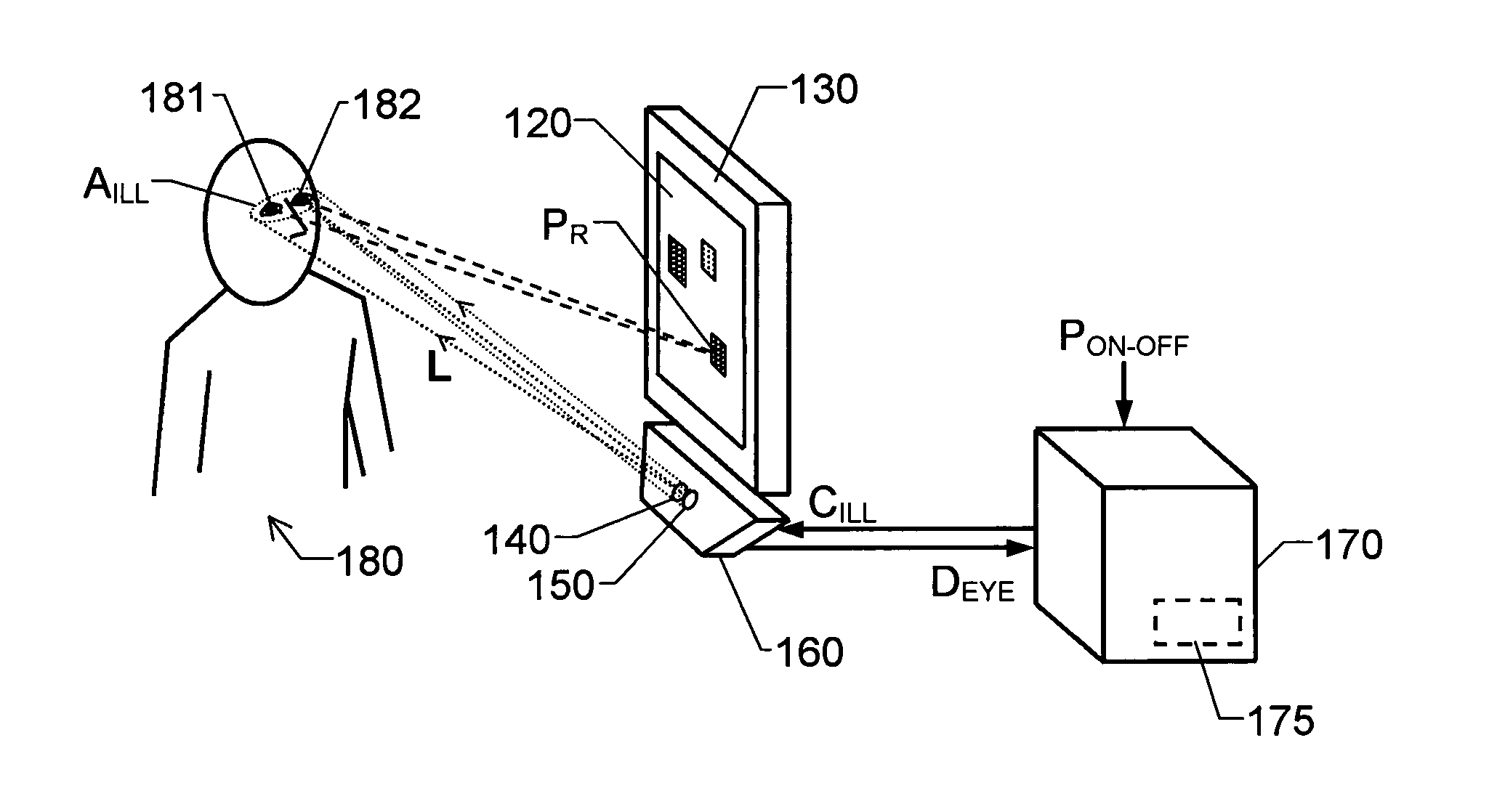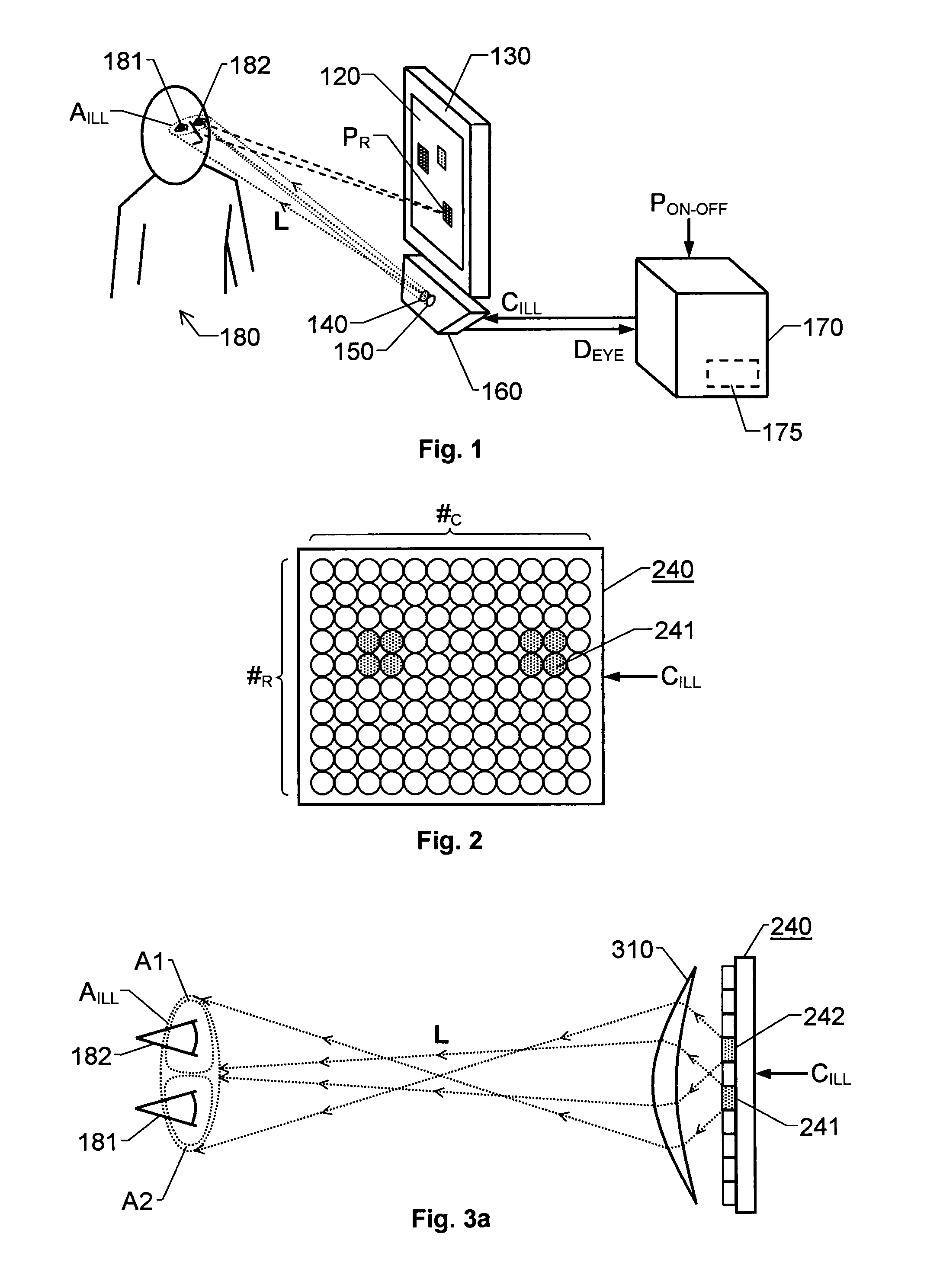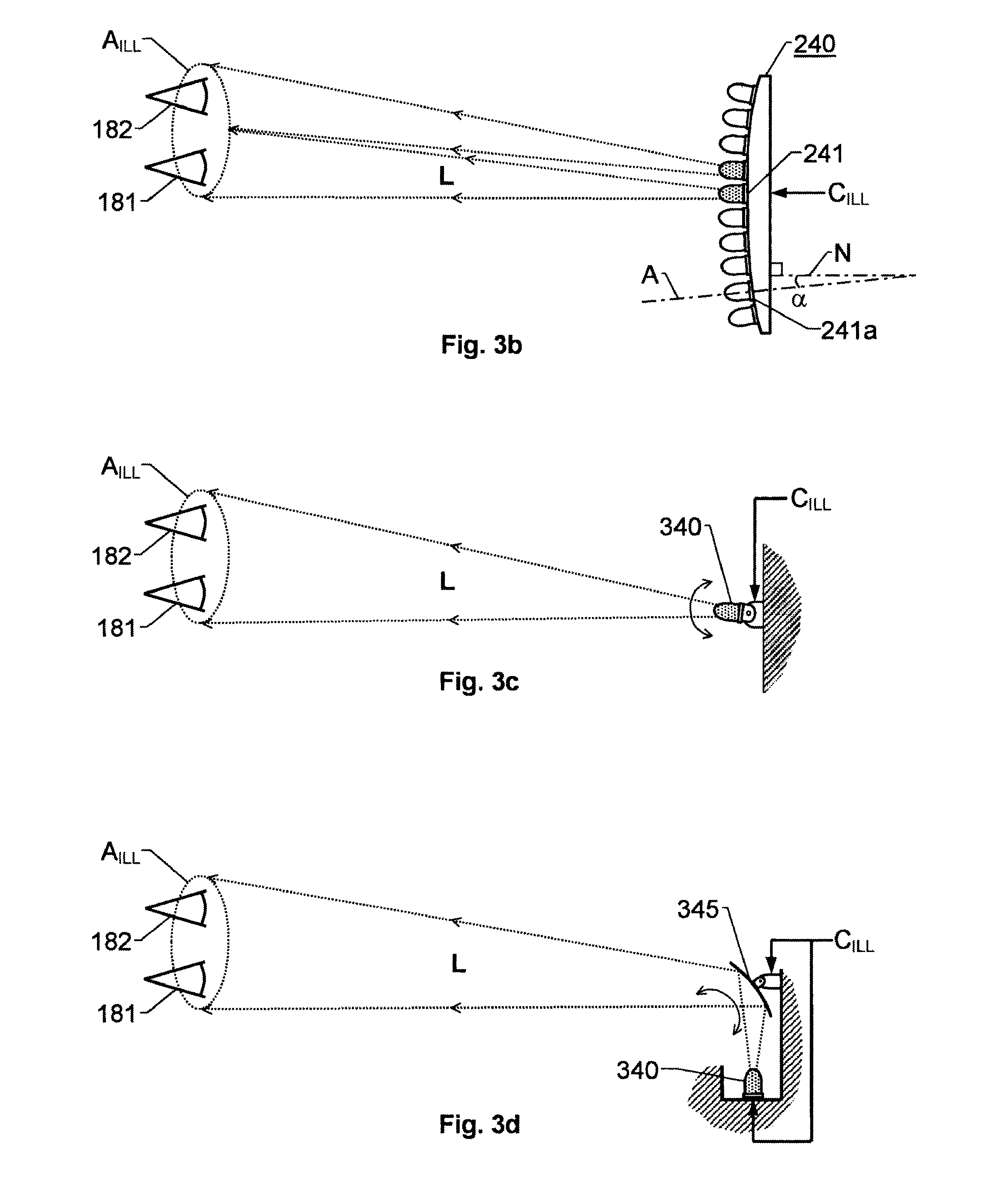Eye tracking illumination
a technology of automatic determination and eye tracking, applied in the field of automatic determination and tracking, can solve the problems of high energy consumption, energy consumption and heat dissipation, and the problem of standard computer output interfaces, and achieve the effect of reliable automatic eye tracking and power efficient and robus
- Summary
- Abstract
- Description
- Claims
- Application Information
AI Technical Summary
Benefits of technology
Problems solved by technology
Method used
Image
Examples
first embodiment
[0034]FIG. 3a illustrates a configuration of light emitting elements 241, 242 in an array 240 of a light source according to the invention. In this embodiment, the light source includes a collimating lens element 310, which is mounted in front of the array 240 (i.e. between the light emitting elements 241, 242 and the intended illumination area AILL). The lens element 310 is adapted to influence light L emitted from the elements 241 and 242 such that an intended area AILL is illuminated, i.e. an area AILL including a respective position estimate of the at least one eye 181 and 182 of a subject 180. Specifically, the collimating lens element 310 is adapted to influence the light L, such that light emitted from a first element 241 is directed towards a first sub-portion A1 of the illumination area AILL. Analogously, light emitted from a second element 242 is directed towards a second sub-portion A2 of the illumination area AILL. Hence, the elements 241 and 242 jointly illuminate the a...
second embodiment
[0037]FIG. 3b illustrates a configuration of light emitting elements 241, 241a in an array 240 of a light source according to the invention. Here, the light emitting element may be organized in essentially the same manner as in FIG. 3a, for instance in rows and columns, or concentrically. However, in the embodiment illustrated in FIG. 3b, the light emitting elements are arranged with different orientations relative to one another. This means that a first element 241a has a first principal light emitting axis A with a first angle a in a first dimension towards a normal plane N of the array 240. A second element 241, however, has a second principal light emitting axis whose angle towards the normal plane N is different from the first angle α at least in the first dimension. Consequently, provided that the first and second light emitting elements 241a and 241 have essentially identical optical properties, these element will emit light in different directions with respect to the first d...
PUM
 Login to View More
Login to View More Abstract
Description
Claims
Application Information
 Login to View More
Login to View More - R&D
- Intellectual Property
- Life Sciences
- Materials
- Tech Scout
- Unparalleled Data Quality
- Higher Quality Content
- 60% Fewer Hallucinations
Browse by: Latest US Patents, China's latest patents, Technical Efficacy Thesaurus, Application Domain, Technology Topic, Popular Technical Reports.
© 2025 PatSnap. All rights reserved.Legal|Privacy policy|Modern Slavery Act Transparency Statement|Sitemap|About US| Contact US: help@patsnap.com



